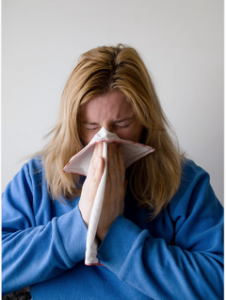Run out of the house, quick latte, grab a donut or a muffin as you pass the break room, hit the desk, nibble on those crispy snacks in the drawer, calorific lunch out with colleagues, more sitting, sugar low. So you grab another coffee and a cookie from the break room, rush home to pick up your child for soccer with a quick stop at the local fast food place because there is no time to make a healthy dinner. All day long, you’ve felt like a cold is coming, but you put the kids to bed and finally relax with a glass of wine and a nibble of something yummy before bed. You deserve it.
Does this sound like your typical day? It is for millions of working men and women doing their best for others but not enough for them to prevent their own future health crisis. Since many employers and employees spend the majority of their days in an office, creating a healthy workplace can make an immediate impact, reaping benefits like increased productivity and attentiveness and reductions in insurance costs and sick time off. With a little investment and employee awareness, you can begin detoxing your workplace as you create a culture of wellness in your organization.
The Office Diet
Oh, if food only stayed at home instead of following us to work! All of those shared cookies, cakes, muffins, and Skittles bowls (not to mention our hidden drawer snacks!) are meant to make us happier workers, but instead, the toxic sugar sludge in our bloodstreams can result in headaches, fatigue, and even muddled thinking. With bathing suit weather just around the corner, Spring might be a fine time to help your employees to jumpstart their healthy eating and exercise habits while encouraging a long-term culture of health and wellness.
First, overhaul the company cafeteria menu and limit food choices to delicious, but healthy, fruit, vegetable, and protein-based foods. Employees, who want to bring snacks to share, should be encouraged to bring in non-sugar based goods such as hummus and veggies or whole grain crackers and low-fat cheese. Consider eliminating soda and snack machines if healthier options are not available. For client lunches out, use an app like Greenease to look for local, sustainable restaurants. Place educational posters around the workplace lunchroom that support your company’s health goals.
Helping your employees stay hydrated throughout the day is another important health tip. Provide purified fresh water, and encourage employees to embrace sustainable practices by bringing their BPA-free plastic or steel water bottle.
Consider starting a “clean living campaign” in your office. Many large companies implement these within their employee wellness programs. However, small businesses can do the same by setting collaborative health goals, along with fun rewards for group and individual achievement in weight loss, diet modification, and exercise. One program to try is the 10,000 Steps Challenge. Group lunch walks, or joining the National Bike Challenge, are other ways to encourage employees to get out and move. Look into health technology systems through your health insurance provider or by using a platform such as Virgin Pulse, to support and monitor employee progress so you can acknowledge organizational fitness achievements.
The Office Environment
One essential, but often overlooked, area of detox is the office air quality. Allergies and airborne germs account for a significant number of worker sick days, with complaints ranging from sinus infections, rashes, and migraines. Enclosed glass-window office buildings mean little chance for fresh air to circulate, and dirty air-conditioning filters also contribute to bad air quality. One business found a solution by purchasing air purifiers for offices and large workspaces. Workers with allergies immediately noticed a reduction in their symptoms. Besides pollen, air purifiers may filter out other indoor pollutants such dust, molds, bacteria, and some indoor chemicals. Before investing in air filters, it is a good idea to do some research. This Environmental Protection Agency’s guide is a good place to start. To reduce indoor contaminants, make sure your office cleaning company is using only non-toxic cleaning solutions, and also consider adding lots of indoor greenery like a plant wall, bamboo pots, or hanging spider plants to filter and add a boost of fresh air naturally.
Invest in office ergonomics. According to the orthopedic journal Spine, low-back pain (LBP) in workers younger than 45 accounts for the most expensive Worker’s Compensation claims. Standing desks, or even treadmill desks stations, such as those installed by Google and Motorola, can reduce back pain and improve overall health in workers. Limit hand and wrist injuries by installing ergonomic keyboards and mouse pads.
Office lighting. The quality and individual control of office lighting can make a difference to employee well-being and safety, including reducing eyestrain and even headaches. Although difficult to measure, one study, “Lighting Quality and Office Work: A Field Simulation Study,” reported that “people with dimming control reported higher ratings of lighting quality, overall environmental satisfaction, and self-rated productivity.” Allow employees some autonomy to control their lighting by installing adjustable window shades and dimmer switches. Replace flickering bulbs immediately and reduce glare on computer screens. For a helpful resource on workplace lighting, click this link.
Detoxing your workplace may take a little time and require a collaborative effort, but it is guaranteed to have a positive payback regarding increased employee productivity, decreased healthcare costs, workplace satisfaction, and enhanced quality of life.





